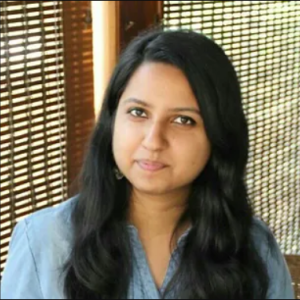Reporting on mental health is not as simple as repeating facts — it also requires the painstaking task of handling sensitive information and stories. Responsible reporting on suicide, for example, can help prevent suicide contagion, also called the Werther Effect.
Mental ill-health is often a consequence of larger systemic issues. It is, furthermore, impossible to report on mental illness without addressing how it changes people's lives. If stories are to be reported truthfully, mental health reporting cannot be conducted through parachute journalism, in which reporters report on a single event for a short period of time.
When Tanmoy Goswami became the Correspondent’s — and the world’s first — “Sanity correspondent,” he sought to nudge readers into thinking about mental health in a new way, whether by covering the need to overhaul the employers’ outlook toward mental health in the workplace or by calling out the systemic factors that weaponize self-care and blame individuals for their ill-health.
In December 2020, Goswami founded Sanity by Tanmoy, first as a newsletter and later as a platform that reports authentic, universal stories rooted in the intersectional nature of mental health, while amplifying lived experience expertise in journalistic sources.
Treading the fine line: Journalism or advocacy?
At Sanity by Tanmoy, Goswami comes from the perspective that only lived experience expertise can inform mental health coverage. “Tweeting about my lived experience of depression, anxiety, and suicidality was what pushed me down the road I find myself currently walking,” Goswami said. “I started writing about mental health because of my own story.”
When Goswami launched Sanity by Tanmoy in December 2020, original subscribers included Jaclyn Schess, founder and CEO of Generation Mental Health. Schess believes that personal experience is what helps Sanity by Tanmoy uncover themes in mental health journalism. “No one else talking about mental health is paying attention to the social, economic, political and ethical determinants the way Sanity is. This site is building a body of knowledge that many folks in the global mental health space need to see,” Schess said.
That the outlet discusses mental health and illness "with clarity and a lucid style, without much jargon” is important, according to Amrita Tripathi, the founder and editor of The Health Collective, which reports on mental health and mental illness from an Indian perspective. “Sanity is helping expand the conversation around mental health in India and the Global South,” he said.
Centering lived experience
Journalists are often told, “you are not the story.” And with good reason. But when journalists are reporting on lived experience, the experts can be the journalists themselves.
“This is the central tension of my work,” Goswami said, explaining that he often cannot be detached from the story he is writing. “If we think of journalism as this 30,000-feet-above-the-ground exercise, then this will never qualify. I am at peace with that.”
Stories covered by Sanity take this unique approach. Take, for instance, this exploration of the connection between psychiatry and police systems. “This reportage stands out to me as one of the best pieces of Tanmoy's contribution in that [the story] ties together social issues in a way that lots of other folks in the mental health space really need to see,” said Schess. "[It centers] around lived experiences and around people who have been excluded from these conversations.”
What was missing from many media outlets' coverage of mental health was “the comfort of knowing that the person who's writing this story actually understands how I experience the world most of the time,” added Goswami.
Challenging orthodoxy
Goswami’s approach diverges from the idea that authoritative sources should only be traditional experts — academicians, researchers, consultants, commentators — and not people with their own personal experiences, in this case with mental illness. This practice has perpetuated a “dial-a-quote” culture dominated by PR juggernauts, which can provide a privileged perspective instead of a more thoughtful approach that actively seeks out stories of marginalized or underrepresented communities and sources.
“I think [lived experience expertise] also drives responsible reporting. In the absence of sources and perspectives with lived experience, the news reports can feel very unsafe. They can use stigmatizing language, which is actually very harmful,” said Schess. While it is possible to report sensitively on issues without lived experience, this expertise can help add nuance and depth to reportage.
Sanity by Tanmoy is helping fill a gap that mainstream media is frequently unable to fill, as a result. “Mainstream media doesn’t seem to have the space or time — think bruising deadlines, which are not conducive to nuanced conversations — for detailed coverage on mental health and illness issues,” said Tripathi.
The media economics of sanity
Running an outlet centered around lived experience is a constant battle of balancing one’s patienthood and the stress of delivering to audiences. Persons with disabilities have fewer “sunny days,” according to Goswami, which brings limitations. "Sanity has a lot of scope for field reportage. Because of resource constraints and because my illness leaves with me only a finite amount of energy every month, this isn’t something I’ve been able to achieve.”
Sanity is completely reader-funded and privacy-friendly. This is done intentionally: intersectionality, lived experience expertise, and autonomy from external funding has always been central to the outlet’s ethos.
Securing funding from advertisers was never on the table for Goswami. “The more you expand your circle of dependence, the more accountable you have to be for things that you have no control over. Besides, if the real goal of this work is to be reader-centric, then the natural extension of this experiment was to ask, ‘Can the readers sustain it?’’”
Sanity by Tanmoy is a prototype — a proof of concept — that shows us how a beat like mental health can be handled with care. Still, Goswami noted, running a venture that centers around one’s identity so closely “is as exhausting and riddled with anxiety as it is rewarding.”
Photo by Emma Simpson on Unsplash.


